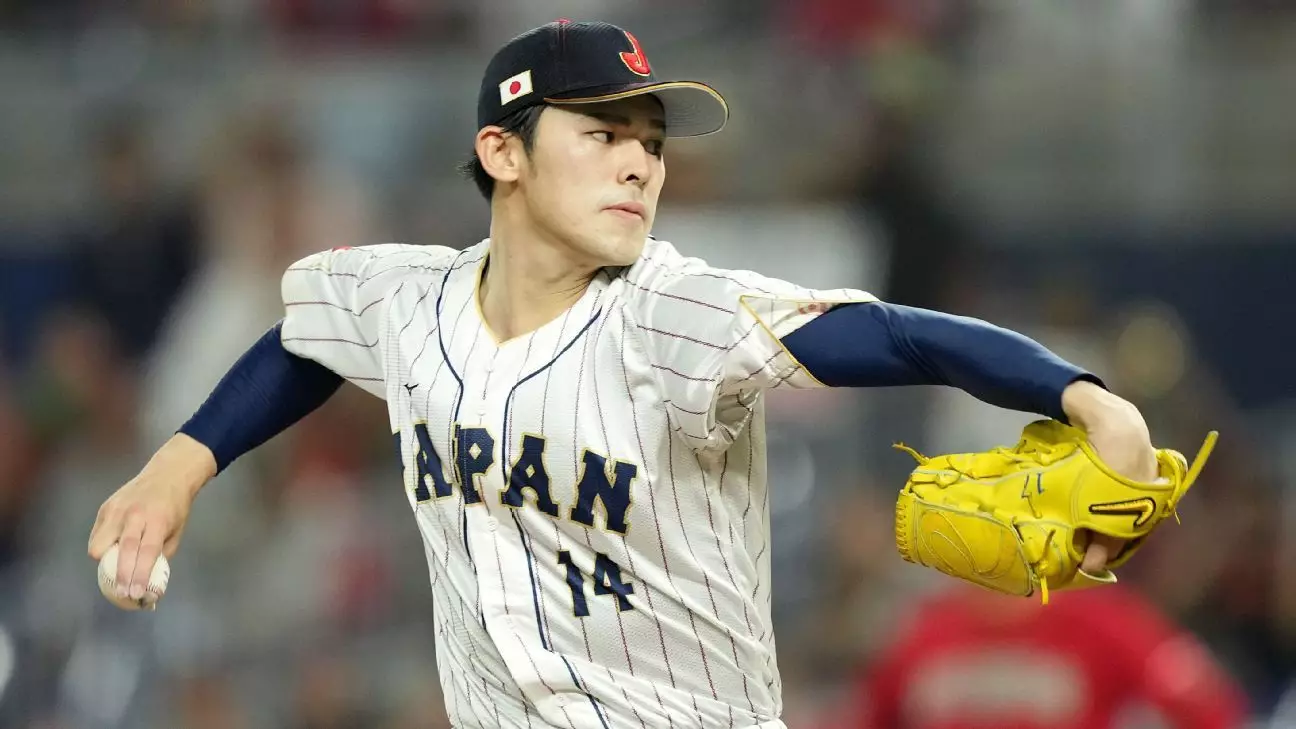In the realm of baseball, all eyes are currently fixed on a young right-handed pitcher whose talent could reshape the dynamics of Major League Baseball (MLB). Roki Sasaki, a 23-year-old sensation from Japan, is poised for a significant transition as he is expected to be officially posted during MLB’s upcoming winter meetings. This pivotal moment, according to ESPN sources, marks the beginning of a 45-day window during which MLB teams will ambitiously court him ahead of the next international amateur signing period commencing on January 15. The announcement from his Nippon Professional Baseball (NPB) team, the Chiba Lotte Marines, on November 9 regarding his placement in the posting system has generated considerable buzz among baseball aficionados.
The process by which Sasaki will transition from NPB to MLB involves a unique system that governs the movement of players between these leagues. Sasaki’s contract negotiations will differ significantly due to MLB regulations stipulating that foreign professionals who are under the age of 25 and possess less than six years of prior experience effectively sign as international amateurs. This categorization implies that Sasaki’s financial compensation will not reflect his immense potential as a starting pitcher; instead, it will align with the restricted budget of international signings. The apparent opportunity for teams to acquire a potentially elite pitcher at a lower-than-average cost is driving a competitive pursuit among franchises.
Under the capped international amateur system, MLB teams are constrained by bonus pools, which can reach up to $7.5 million for top spenders, while lesser teams have pools starting around $5.1 million. Moreover, teams can augment these pools by trading for up to an additional 60% of their pool funds, setting the stage for some strategic maneuvers as teams jockey to land Sasaki’s signature on a contract.
Sasaki’s performance stats from the recent season speak volumes about his capabilities on the mound. His record of 10 wins and 5 losses, combined with a remarkable 2.35 ERA, has captured the attention of avid scouts and analysts alike. With 129 strikeouts against just 32 walks over 111 innings of play, Sasaki has showcased his formidable skills, including arguably the best split-fingered fastball in the world, alongside a triple-digit fastball and an effective slider. His entire career in NPB mirrors this excellence; over four years, he amassed a 29-15 record with a stunning 2.10 ERA, accruing 505 strikeouts against 88 walks in 394.2 innings pitched.
Frankly, these numbers position Sasaki as a potential front-line starter capable of significantly impacting his future MLB team. Nonetheless, the rush to secure him may lead to complex decisions about prior verbal agreements some teams made with younger Latin American players, potentially illuminating the challenges involved in the recruitment process.
With Sasaki’s decision pending, teams like the Los Angeles Dodgers are already viewed as frontrunners. Their existing connection to Samurai Japan teammates Shohei Ohtani and Yoshinobu Yamamoto could provide a collaborative environment conducive to Sasaki’s adjustment to American baseball. However, the Dodgers aren’t guaranteed a straightforward path to acquiring him. Other franchises, including the San Diego Padres, Chicago Cubs, Texas Rangers, New York Mets, and San Francisco Giants, have also emerged as significant contenders in this high-stakes sweepstakes.
The transfer process bears uncanny similarities to Ohtani’s prior posting, wherein teams composed comprehensive outlines of their developmental strategies in a competitive submission process. While details surrounding Sasaki’s recruitment are expected to differ, a comparable approach to narrowing down the field of suitors seems likely.
Roki Sasaki represents a once-in-a-lifetime pitching talent whose potential may not just bolster the rosters of whichever team he joins, but could redefine expectations for young pitchers transitioning to Major League Baseball. As his posting approaches and teams prepare their strategies, one thing is clear: the landscape of MLB could be on the verge of something transformative, changing not only Sasaki’s career trajectory but also the competitive dynamics of the league itself. His decision will undoubtedly be one of the most scrutinized throughout the winter meetings, as fans and analysts alike anticipate what the future holds for this extraordinary baseball talent.

